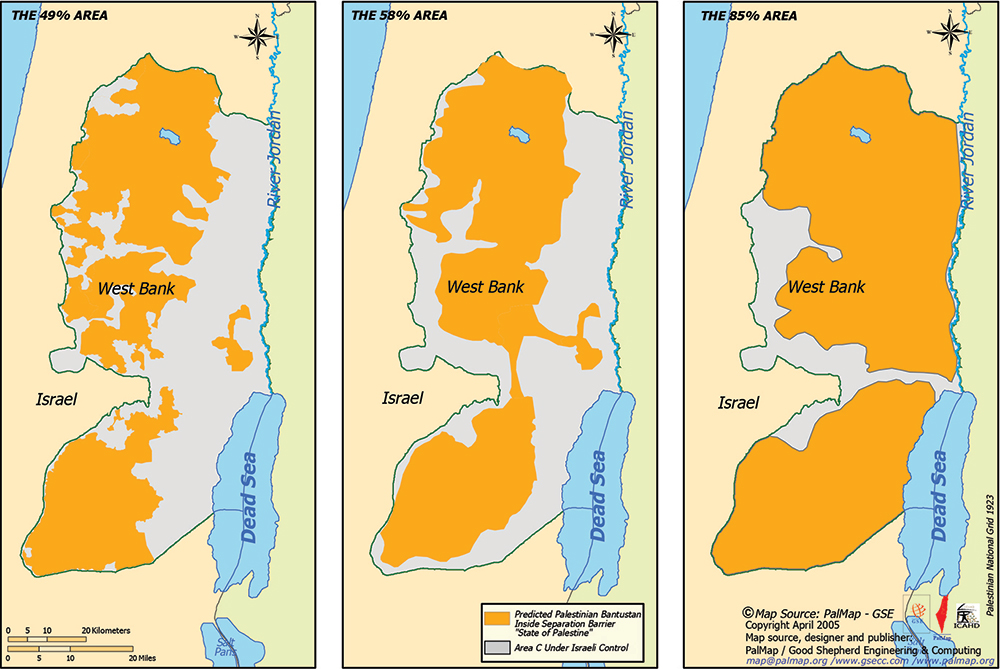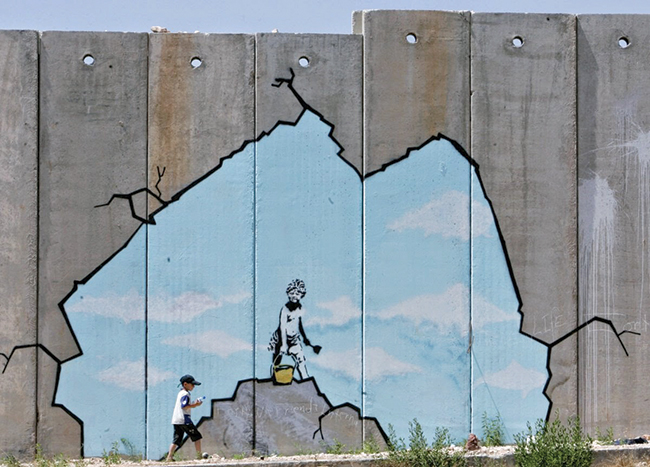Given the Matrix of Control,i and America accepting Israel’s annexation of its major settlement blocs in the West Bank, there emerge three future options for potential Palestinian mini-states. Comprised of as many as four islands, occupying only 10-19% of historical Palestine, these Bantustans would lack international borders, lack territorial contiguity, lack freedom of movement both internally or externally, not have control of their water or other major resources, and lack control of their airspace or even communications sphere. With little economic viability and limited access to Jerusalem, they would form a demilitarized entity lacking even the authority to enter into foreign alliances without Israeli approval.
If Israel has succeeded in rendering the occupation permanent, it is not because there were logistical difficulties in removing the settlements. A poll conducted by Peace Now found that 90% of the settlers would leave if they were ordered to leave and offered comparable housing inside Israel,ii as most of them live in the occupied territories for economic and quality-of-life reasons. The element lacking is the readiness and will of the international community to force the Israeli government to abandon its settlement enterprise.

Israel itself, in fact, desperately needs a Palestinian state since it does not want to bestow citizenship on Palestinians, but cannot deny it to them permanently. In order to retain its Jewish character, yet control the entire country, Israel must somehow ‘relieve itself’ of the Palestinian population. The only way out of the quagmire is the establishment of Palestinian Bantustans – since ‘transfer’ (Israel’s official term for the ethnic cleansing of the OPT) is impossible under the present geopolitical circumstances. Sharon suggested a plan of “cantonization” on 40% of the West Bank,iii but also indicated that he might be willing to unilaterally “give” the Palestinians 60%, perhaps even a bit more. Labor, wishing to make a Bantustan cosmetically acceptable, would offer up to 85% of the Occupied Territories, knowing that Israel needs just a strategic 12-15% of the WB to retain control.iv
If the settlements are to remain, the international community will be confronted with two equally bleak choices: either accept and condone a new apartheid situation, or work towards a just and sustainable solution: a single democratic state in the entire country, a regional confederation, or some other option. It is to be hoped that apartheid, the only ‘solution’ Israel is offering by rendering its occupation irreversible, will not be acceptable.
Map taken from Jeff Halper and Michael Younan, Obstacles to Peace, Palestinian Mapping Center (palmaps.org).
Caption by Michael Younan.
i. Jeff Halper, Israeli Commission Against House Demolitions (ICAHD), http://icahd.org/get-the-facts/matrix-control/
ii. Haaretz, 32.7.2003, http://www.haaretz.com/poll-71-of-settlers-say-there-will-be-deal-with-the-palestinians-1.94986.
iii. Anne Le More, International Assistance to the Palestinians after Oslo: Political guilt, wasted money (Routledge Studies on the Arab-Israeli Conflict), pg. 170.
iv. eff Halper, “Matrix of Control”, The Israeli Committee Against House Demolitions.


